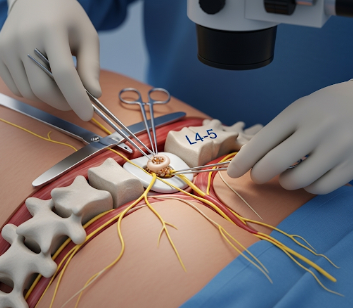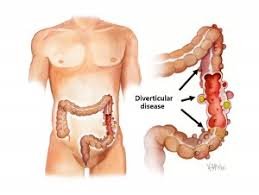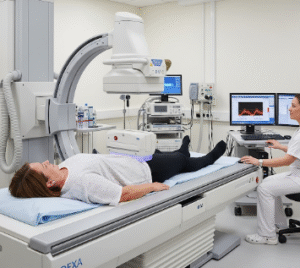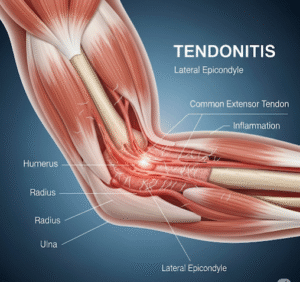Overview
Diskectomy (also spelled discectomy) is a surgical procedure to remove part or all of a herniated intervertebral disc that is pressing on a nerve root or the spinal cord. This surgery is commonly performed to relieve pain, numbness, or weakness caused by nerve compression in the spine.
In South Korea, diskectomy is performed in advanced neurosurgery and orthopedic spine centers using modern microsurgical and minimally invasive techniques, which reduce recovery time, minimize tissue damage, and improve outcomes.
What is Diskectomy?
Diskectomy involves the removal of the protruding or herniated portion of the spinal disc to relieve pressure on nearby nerves. The procedure can be performed at any spinal level, most commonly in the lumbar (lower back) or cervical (neck) regions.
Indications include:
- Herniated or slipped disc causing nerve compression
- Persistent back or leg/arm pain unresponsive to conservative therapy
- Numbness, tingling, or weakness in extremities due to nerve impingement
- Loss of bladder or bowel control in severe cases (emergency)
Purpose:
- Alleviate nerve pain and neurological symptoms
- Improve mobility and quality of life
- Prevent further nerve damage and functional loss
What are the Benefits?
Diskectomy offers several therapeutic and functional benefits:
✔ Rapid relief from nerve pain, numbness, and weakness.
✔ Minimally invasive options allow smaller incisions and faster recovery.
✔ High success rate in improving mobility and quality of life.
✔ Reduces the need for long-term pain medication.
✔ Can prevent progression of nerve damage or paralysis.
Procedure Details
1) How should I prepare for Diskectomy?
- Medical evaluation: MRI or CT scan to confirm disc herniation, blood tests, and cardiac assessment
- Medication guidance: Adjust anticoagulants or anti-inflammatory medications as advised
- Preoperative counseling: Discuss surgical approach (open vs minimally invasive), anesthesia options, and expected outcomes
- Physical preparation: Maintain fitness and follow spine-specific exercises if instructed
- Consent: Understand procedure, risks, and post-operative rehabilitation
South Korean spine centers provide thorough preoperative planning to ensure patient safety and optimize surgical outcomes.
2) What happens during Diskectomy?
- Anesthesia: General anesthesia is standard
- Surgical approach:
- Open diskectomy: Traditional approach with a small incision over the affected spinal segment
- Microdiskectomy: Minimally invasive approach using a microscope for precise removal of herniated disc material
- Endoscopic diskectomy: Small incisions with endoscope assistance for even faster recovery and reduced tissue damage
- Procedure:
- Surgeon removes the portion of the disc pressing on the nerve
- Nerve decompression is confirmed, and surrounding tissue is preserved
- Duration: Typically 1–3 hours, depending on complexity and level of herniation
Korean surgeons use microsurgical tools, intraoperative imaging, and advanced endoscopic techniques for high precision and minimal disruption.
3) What happens after Diskectomy?
- Immediate post-op: Monitor vital signs, pain management, and neurological function
- Medications: Pain relievers, anti-inflammatory drugs, or muscle relaxants may be prescribed
- Activity: Gradual mobilization with guidance from physiotherapists; avoid heavy lifting or twisting
- Follow-up: MRI or X-ray may be used to confirm decompression; rehabilitation exercises start as directed
- Recovery: Most patients resume light activities within 1–2 weeks; full recovery may take several weeks
Risks / Benefits
Potential Risks:
- ➤ Infection at surgical site
- ➤ Bleeding or hematoma formation
- ➤ Nerve injury or persistent neurological symptoms
- ➤ Spinal instability requiring further surgery
- ➤ Recurrent disc herniation
Major Benefits:
- ✔ Effective relief from nerve pain and neurological symptoms
- ✔ Minimally invasive options allow faster recovery
- ✔ Preserves spinal stability and mobility
- ✔ Reduces dependence on long-term pain medication
- ✔ High success rate for improving quality of life
Recovery and Outlook
- Immediate: Mild pain or soreness at incision site; gradual improvement in nerve symptoms
- 1–2 weeks: Resume light daily activities with physiotherapy guidance
- 4–6 weeks: Most patients regain strength and mobility; return to work possible for non-strenuous jobs
- Long-term: Reduced pain, improved function, and lower risk of permanent nerve damage
South Korean hospitals provide comprehensive post-operative rehabilitation, pain management, and physiotherapy programs to ensure optimal recovery.
When To Call the Doctor
Contact your spine surgeon if you notice:
- ➤ Severe or worsening pain not relieved by medications
- ➤ Numbness, tingling, or weakness worsening in legs or arms
- ➤ Loss of bladder or bowel control
- ➤ Signs of infection (fever, redness, or discharge at incision)
- ➤ Persistent swelling or drainage from the surgical site
Best Korea Option / Process
South Korea offers world-class diskectomy services due to:
- Experienced neurosurgeons and orthopedic spine specialists
- Minimally invasive and endoscopic surgical options
- Advanced imaging and intraoperative navigation
- Structured rehabilitation and physiotherapy programs
- International patient support for scheduling, translation, and follow-up
- High success rates and minimal complications
Top hospitals for Diskectomy in Korea:
- Samsung Medical Center, Seoul – Spine Surgery Division
- Asan Medical Center, Seoul – Neurosurgery & Orthopedic Spine Center
- Severance Hospital (Yonsei University Health System) – Spine Surgery Program
- Seoul National University Hospital – Advanced Spine Surgery Division













